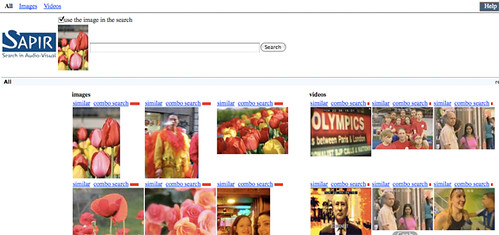Article From:http://techxav.com/2009/09/10/sapir/ By Brad Thompson
Before the recent global recession, traveling and touring around exotic places like Paris and Tokyo has always been a ‘necessity’ for most of us during the summer holidays. However, few years later, often we cannot quite remember the locations as we skim through photos of ourselves. This is when a new technology, SAPIR, or Search in Audio-Visual Content Using Peer-to-Peer Information Retrieval comes in handy.
The US tech giant has collaborated with the European Union consortium to develop a new image and video recognition-based search that claims to be better than current search technologies used by search engine leaders Google and Yahoo.
SAPIR which focuses on advanced, content based similarity search using distributed and P2P technologies, is able to analyze and identify the pixels in large-scale collections of audiovisual content. For example, it can analyze a digitized photograph or the bitstreams in electronic sound files – even if they have not been tagged or indexed with descriptive information. The multimedia identified is automatically indexed and ranked for easy retrieval. The clever search system can even index and enable the ability to sift through collections of millions of multimedia items by extracting “low-level descriptors” from the photographs or videos. These descriptors include features such as color, layout, shapes, or sounds.

This new search technology has not been implemented or tested by major search engines on the Web. Different from SAPIR, most search engines such as Google and Yahoo merely sift through images based on text tags assigned to the photos.
With some tweaks and further improvements, the technology could be used to develop applications to increase the efficiency in the healthcare industry. For example, they can aid in patient healthcare and assisting with diagnoses by analyzing medical images and rich-media patient records, then comparing that information to historical data from distributed medical repositories.
Here’s a video demonstration of a man testing out the SAPIR mobile search interface in Plaza de España, Madrid. He was walking into a square in the tourist attraction and snapping a photograph of a statue using his N95 8GB. He then searches for similar images using SAPIR and found some similarity – similar colors and shot angles. However, the technology does not seem to work perfectly. As a result, he tried a combined search and punched it ‘Madrid’ as a keyword. And it works!

No comments:
Post a Comment